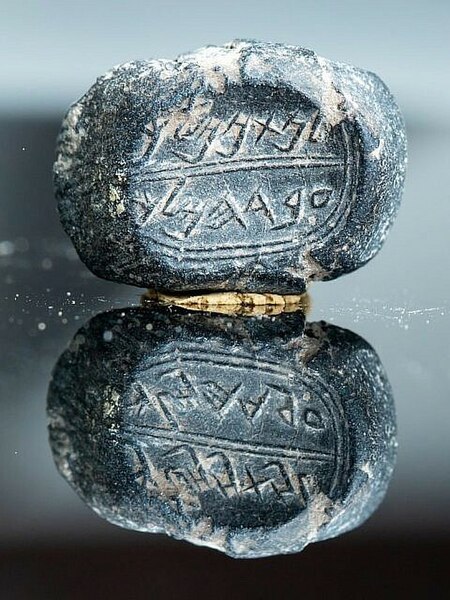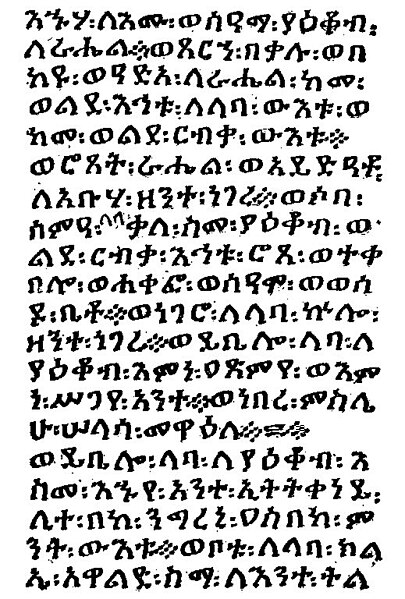The Phoenician alphabet is a consonantal alphabet used across the Mediterranean civilization of Phoenicia for most of the 1st millennium BCE. It was the first mature alphabet, and attested in Canaanite and Aramaic inscriptions found across the Mediterranean region. In the history of writing systems, the Phoenician script also marked the first to have a fixed writing direction—while previous systems were multi-directional, Phoenician was written horizontally, from right to left. It developed directly from the Proto-Sinaitic script used during the Late Bronze Age, which was derived in turn from Egyptian hieroglyphs.
Seal inscribed in the Phoenician script (also known as Paleo-Hebrew)
Study of Phoenician medals, by Jean-Jacques Barthélemy
The Pococke Kition inscriptions, transcribed by Jean-Jacques Barthélemy. No. 1 is Pococke's No. 2 (KAI 35), and No. 3 is Pococke's No. 4. The other two are Hebrew transliterations of the same inscriptions.
Photograph of section of the Zayit Stone, 10th century BCE: (right-to-left) the letters waw, he, het, zayin, tet (𐤅𐤄𐤇𐤆𐤈)
An alphabet is a standard set of letters written to represent particular sounds in a spoken language. Specifically, letters correspond to phonemes, the categories of sounds that can distinguish one word from another in a given language. Not all writing systems represent language in this way: a syllabary assigns symbols to spoken syllables, while logographies assign symbols to words, morphemes, or other semantic units.
A photo of the Old Hungarian script
Ge'ez Script of Ethiopia and Eritrea






